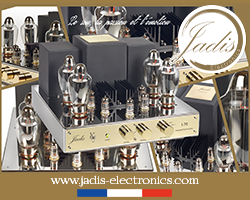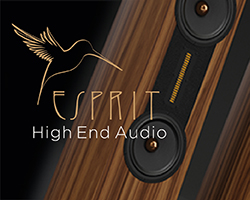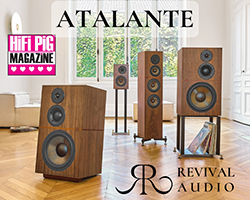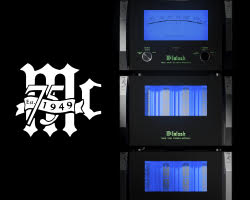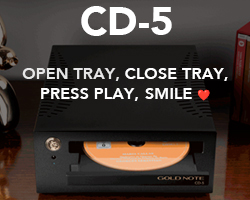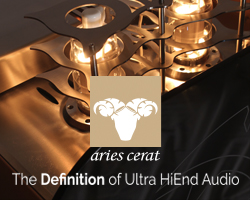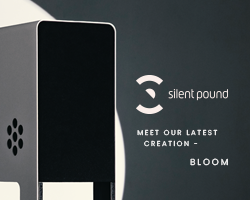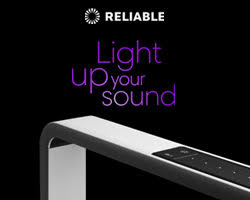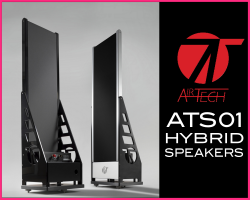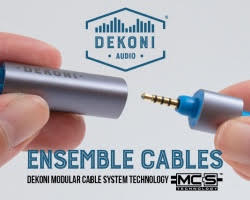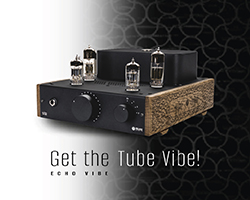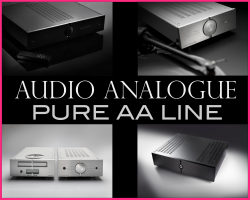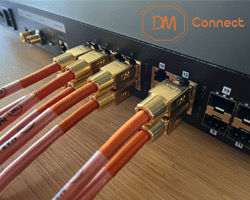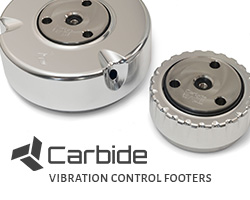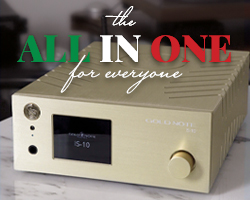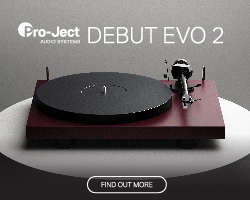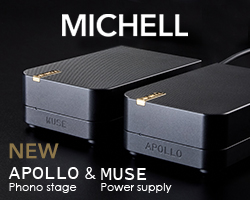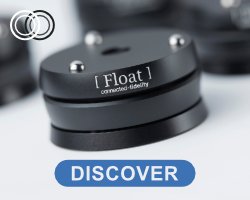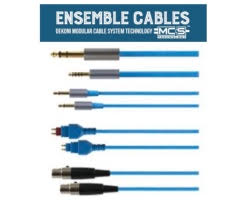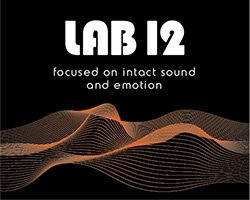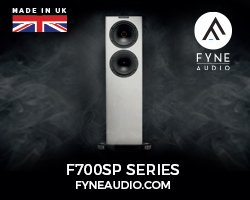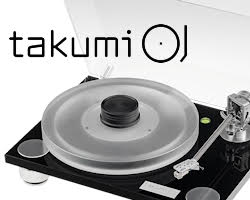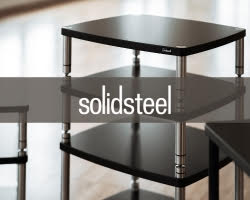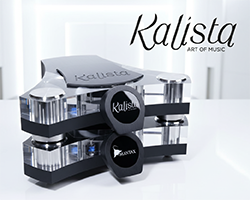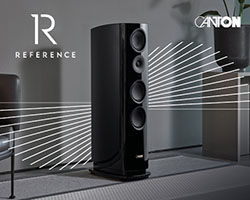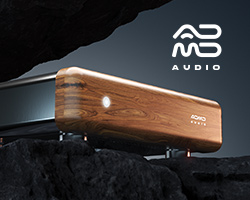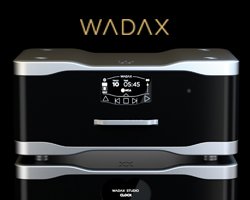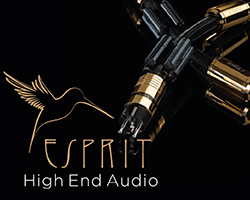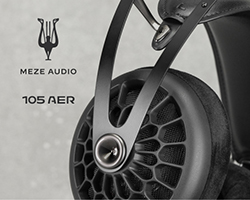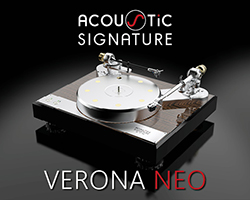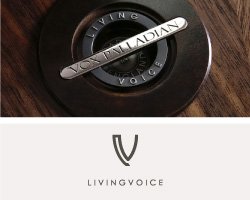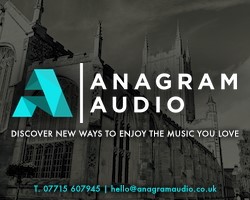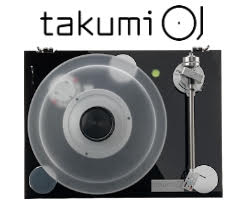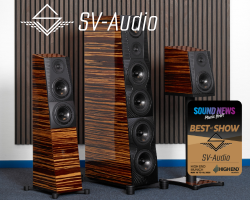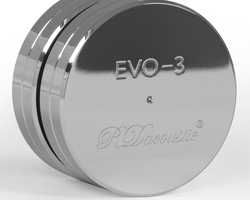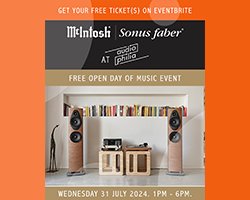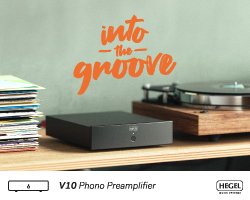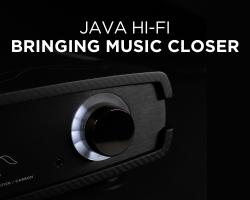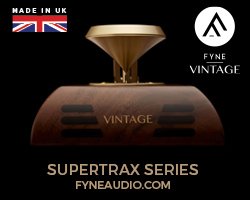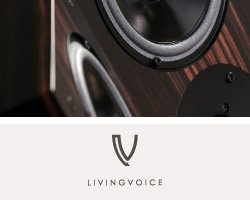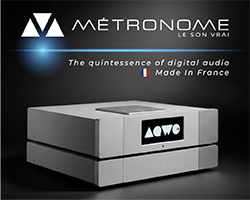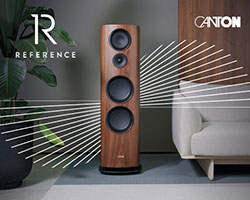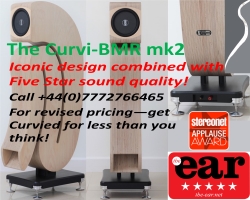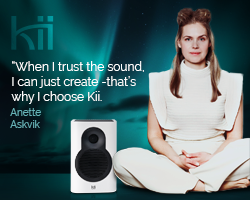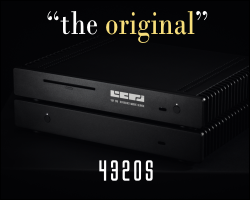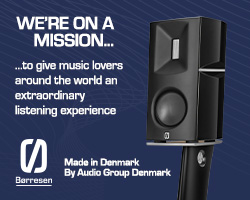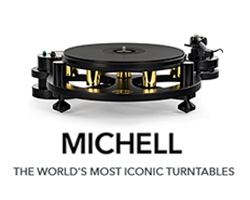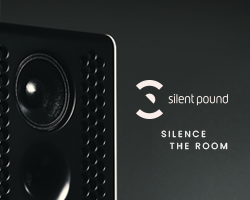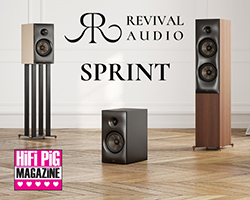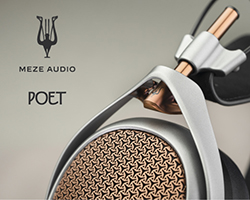MORGAN ACOUSTICS TEN 12 LOUDSPEAKERS REVIEW
Morgan Acoustics Ten 12 Loudspeakers are a brand new HiFi speaker, from a brand new manufacturer, but with years of thought and study behind its design. Janine Elliot takes a world-first formal listen to this new British brand’s premiere outing.
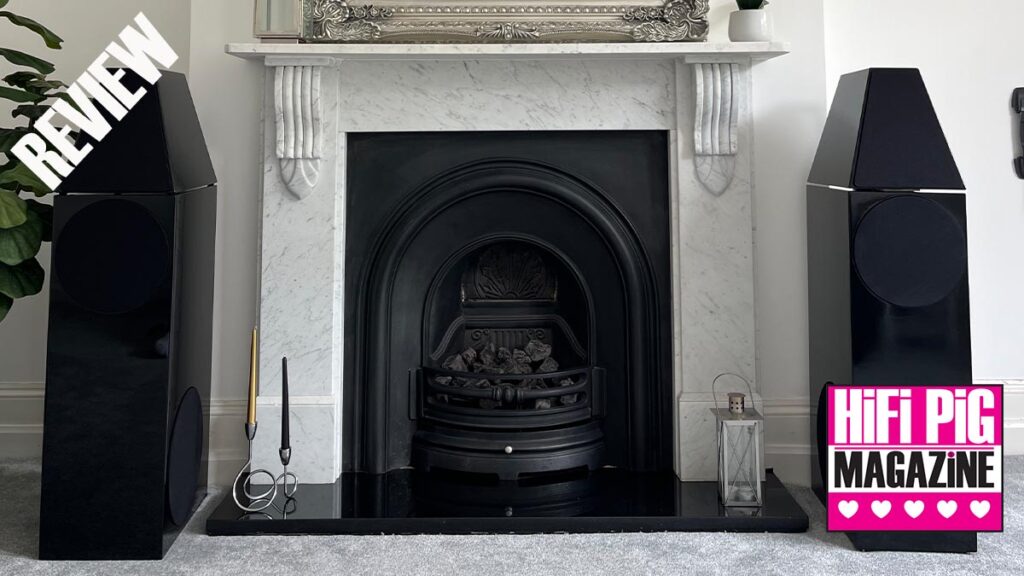
Having appeared at the Bristol HiFi Show in February 2025 and later seen at the North West Audio Show, Morgan Acoustics seems to have created quite a stir with their very first and (currently) pre-production loudspeaker, the Ten 12. Mentioned in several HiFi publications by meandering journalists visiting the various rooms, HiFi PiG considered that it would be well worth a first review on the company’s floor-standing twin-box loudspeaker. So, after readjusting my living room to fit in these behemoths, I decided it would be good to give them a serious listen.
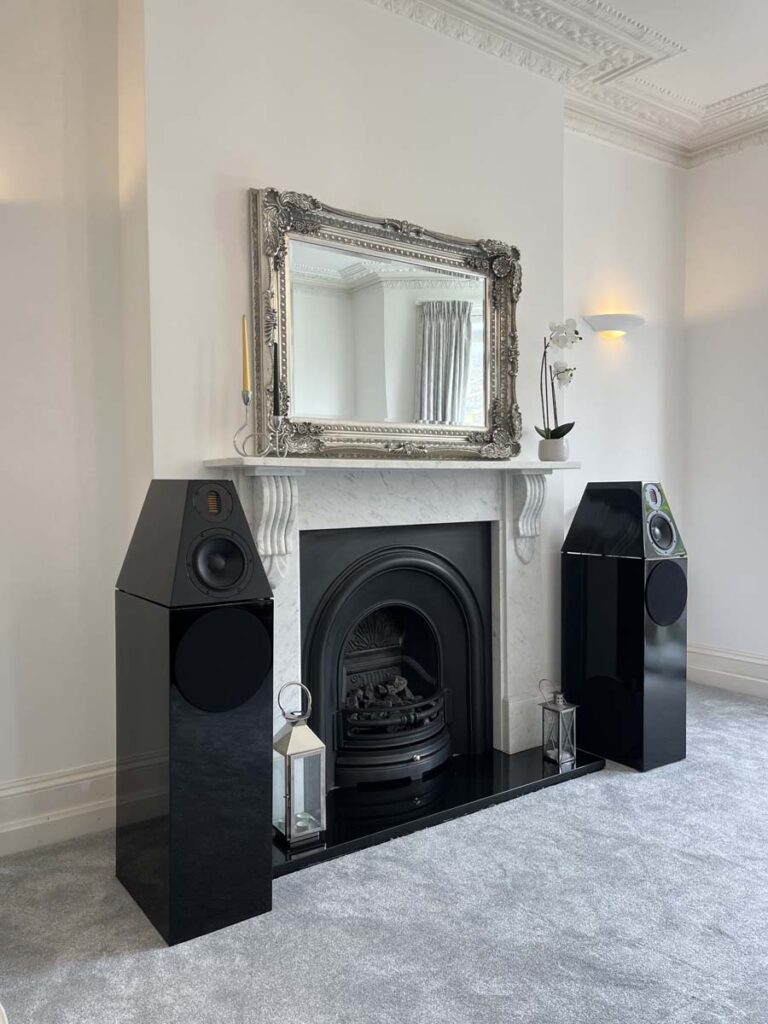
Run by Dan Morgan from Scotland (and ably assisted by his father, another Dan, as roadie and fan club), the 12” bass, 10” bass/mid, 7” treble and AMT tweeter loudspeaker was carefully positioned in the best spot for me to give good listening. They look a bit like Wilson Watt Puppies, though the design is significantly different. Dan knows a lot about loudspeaker design and was careful not to allow me to spill the beans on too much of his technology, but at least enough to give me food for thought. A shame, as if you were buying a motor, you’d surely like to know if it was a straight 6 or V8. Rather than cars, we spent a few hours just talking about the maths and physics of cabinet design. With a Master’s Degree in aerospace technology at Leeds University and spending years solving mechanical and electrical problems in the automotive and aerospace industries, Dan decided to put together a loudspeaker that would sound like a £100,000 product, which he couldn’t afford, in a two-box loudspeaker that he would be able to afford. Indeed, he wasn’t happy with a number of the extravagant boxes out there in HiFi land – and we both agreed on a few of them during our discussions – so this Ten 12 is the result of some 20 years of experimenting as a hobby, and more directly is the result of 6 years’ hard work. This is a product that he never intended to sell, were it not for the number of folks telling him that he should. It utilises much maths and physics in its design, though Dan told me, “Fine tuning has to be done by ear”. Phew!

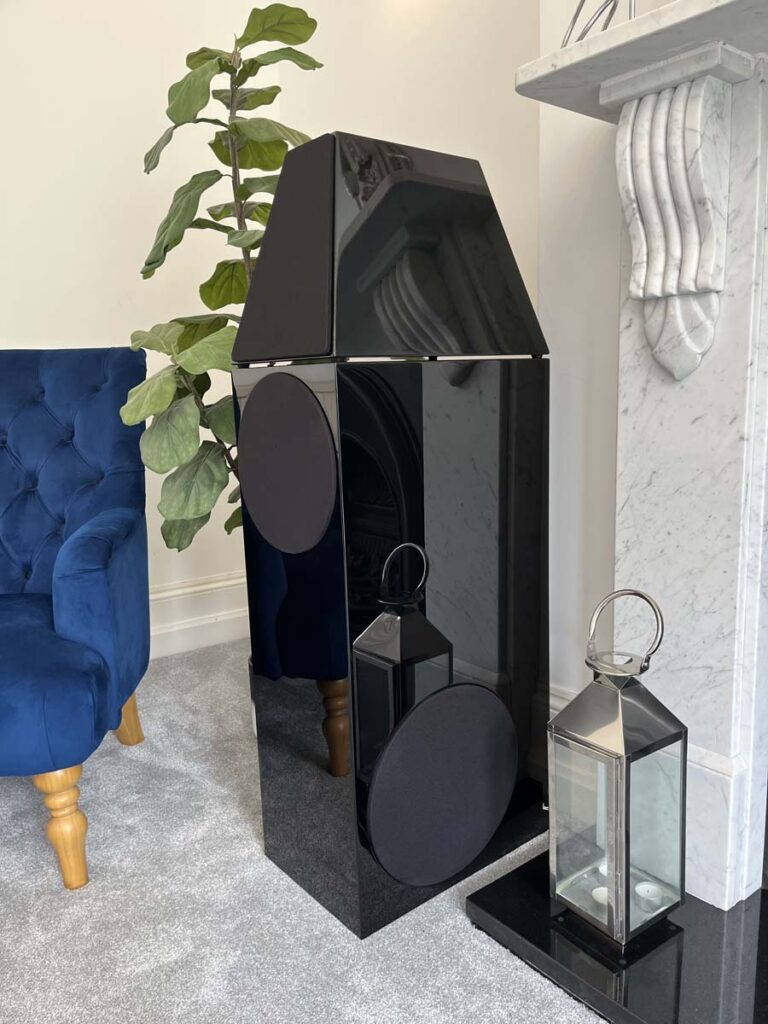

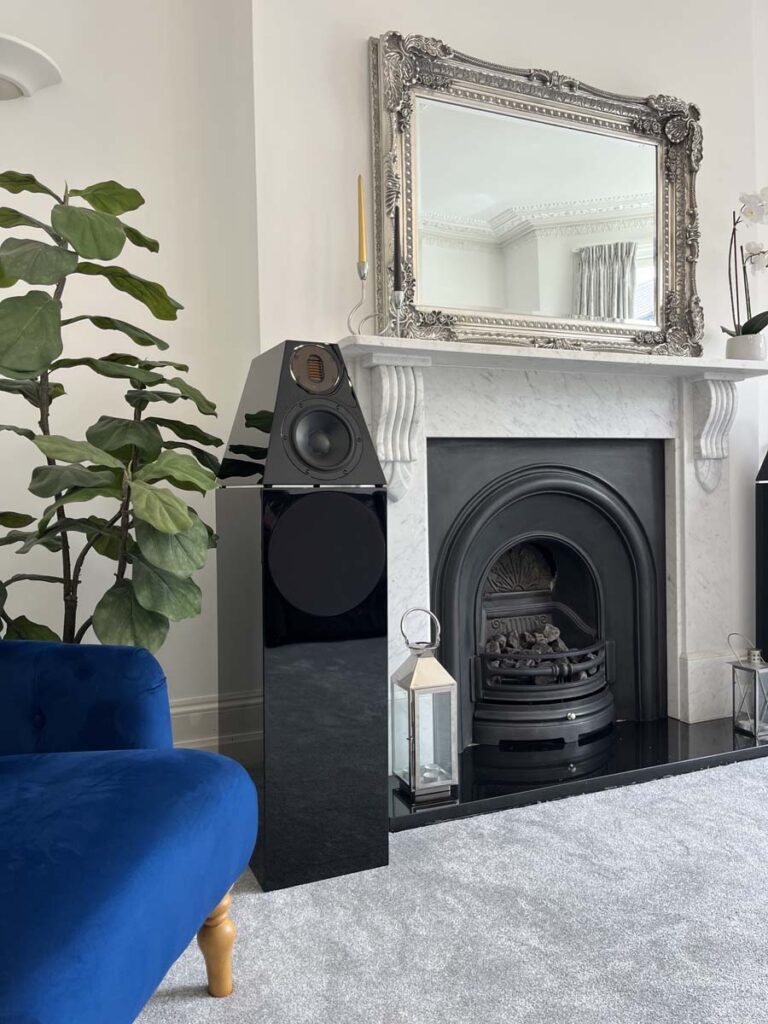
THE DESIGN AND BUILD OF THE TEN 12
This speaker is definitely designed for bigger rooms, and so my usual 7-foot rule-of-thirds listening area wasn’t strictly big enough, so the speakers were placed lengthwise down my rectangular room, 8 feet apart and 12 feet from my ears. I’ve done this before, so it only stresses out the cat who dislikes any change.
The loudspeaker is designed in two boxes, both heavily braced and made from Baltic birch ply. The bottom unit holds a sideways-facing 12” bass unit at the bottom and a 10” bass/mid at the front top. Having the 12” bass facing toward each other prevents reflections from walls in those customarily parallel-walled houses. The top unit is angled and contains the 7” mid/treble and the AMT tweeter. Dan was quick to tell me not to call it ribbon, as this Mundorf model is an air motion transformer with a folding pleated front, like bellows, rather than the conventional flat ribbon design, as in my Townshend Supertweeters. To many, there are advantages with AMTs in areas such as wider staging, efficiency, and more detailed sound. Whereas the bottom bass unit is ported underneath at the rear section in a large rectangular shape to prevent chuffing, the bass/mid is a sealed unit, and the truncated pyramid shape of the top unit is also a sealed unit, which sits atop the bottom unit using rubber feet. Short connectors link electronics to the bottom unit, and a single pair of excellent 4-way 4mm binding posts allow for cabling from your amplifier. There is no bi/tr/tetra-wiring, and his closely guarded crossover design is 4-way. All drivers are from European manufacturers. As Dan told me, “The speaker doesn’t need damping as it is so stiff”, and non-parallel sides deal with reflections. He states, “Internal cabinet architecture is optimised to suppress standing waves and structural resonances”. Wool wadding is used in the treble box. In my listening, I particularly chose music that would exacerbate internal vibrations to see if that was a problem. In summary, Dan has kept the design of the speaker as simple as possible and used the best possible components. The bass, mid-bass and midrange drivers use advanced technologies to operate with high linearity, according to Dan. As he told me, “This ensures resolution and control even under dynamic load”. Driver integration is precisely managed to maintain time and phase consistency.
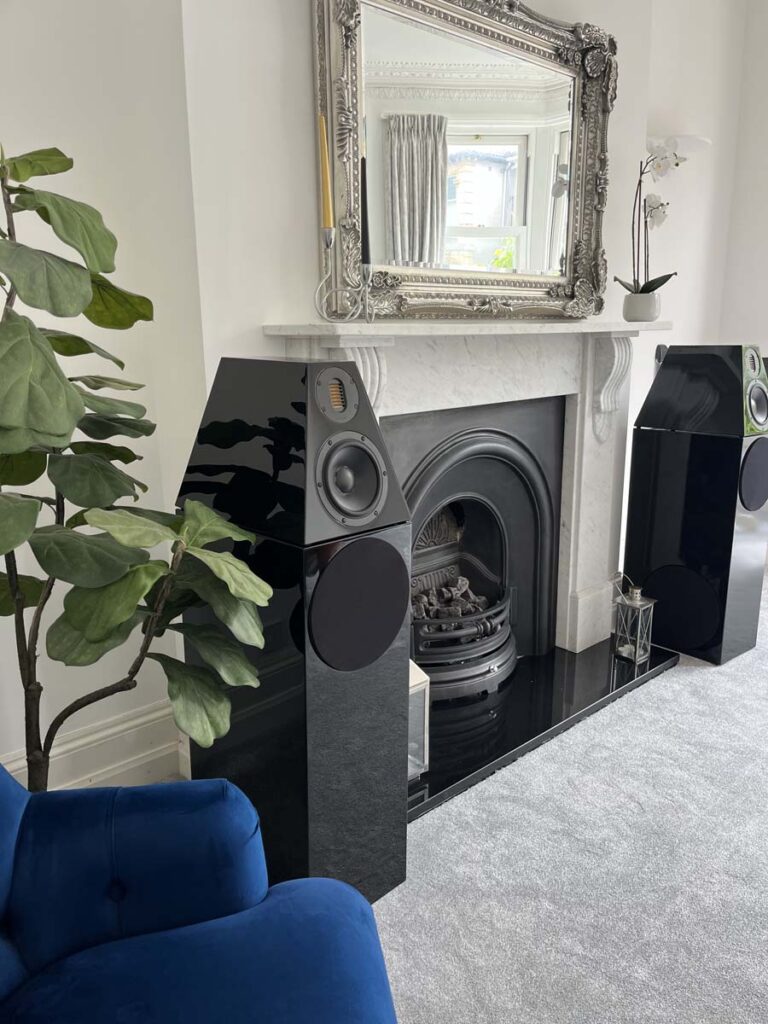
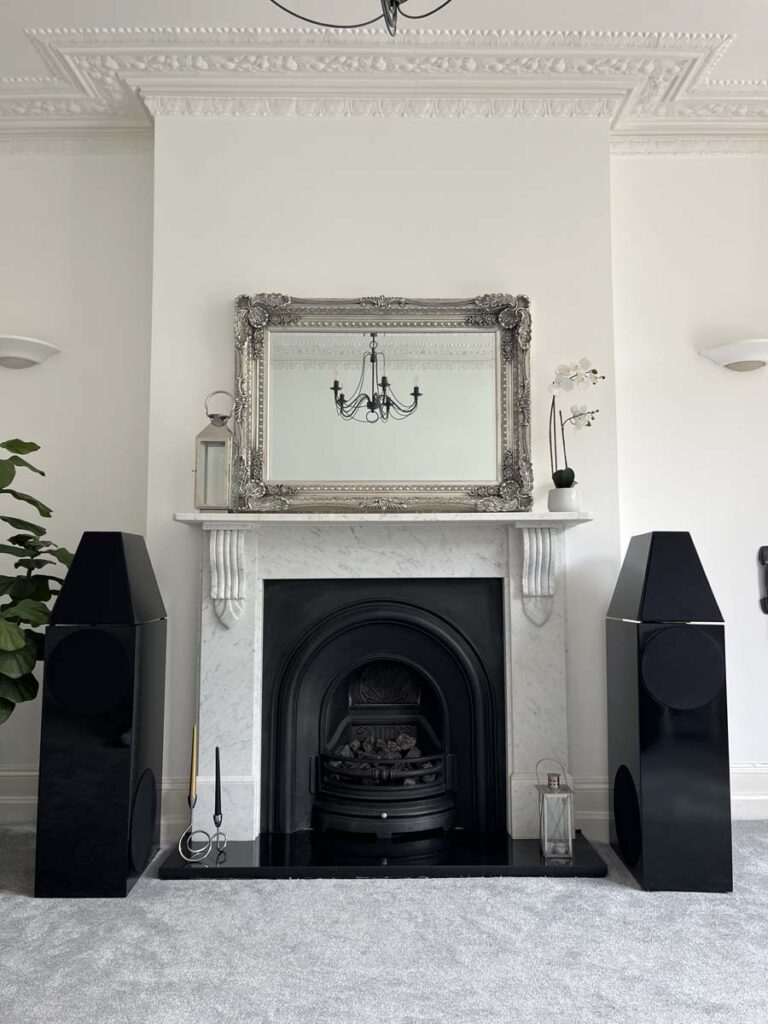


These speakers are designed for really powerful amplifiers, which was great for my Krell 500W powerhouse, but I also chose to use my much cheaper but excellent Slee mono-blocks, which are both underrated in terms of power and performance. I also used the Australian Burson Bang (40W) and valve 10W Stereo20. The Ten 12 is very efficient at 93dB, which is excellent given there are so many drivers, and shows the crossover to be well designed; think of those complicated BBC crossovers for the diminutive LS3/5a that only give 83dB/m/watt. Obviously, bigger drivers shift more air. The bass speakers have larger voice coils, which helps give them higher power handling as well as higher efficiency. This speaker for review is a prototype in gloss black, but they are also available in walnut, walnut burl, cherry, oak, and any custom gloss colour requested. The basic model is priced at £38,800, showing Dan has succeeded in producing a significant-looking loudspeaker at less than the price of a house. But how does it sound?
SOUND QUALITY OF THE MORGAN TEN 12
Whilst HiFi shows tend to blare out music as loud as possible (and it was clear that Dan likes to hear music louder than me), I wanted to test these speakers at all levels, and not treating them merely as PA boxes. A speaker system, whether large or small, needs to be able to play music both quietly and louder with equal finesse. Many speakers fail to do the former well, but the best will work at both levels, despite our ears’ automatic level control and the fact that there are different frequency curves from our inbuilt microphones at different intensities (originally called the Fletcher Munson curves, and you may well remember that horrid “loudness” button on latter twentieth-century amplifiers for playing music quietly!) My overall conclusion was that these speakers needed to be pumped hard to get the best out of them, though not quite enough to annoy my neighbours, luckily.
The first music I played on the Morgans was Patricia Barber’s “The Moon” from the album ‘Verse’. This is a great album to test out speakers; spoken as well as sung vocals, which really will show any sibilance, plus lovely trumpet “answering phrases” decorating her spoken vocals, some great trumpet solos, and detailed and varying percussion and acoustic bass. There is also so much “space” and digital reverb in this track, and it really highlights good and bad music systems. At reasonable dB levels, the Ten12s gave a confident performance and enabled the music to come out really positively as if she were in the room, which, after all, is the objective of a good speaker system. Indeed, it coped well with all her vocal complications. I always think that anyone designing a speaker should test it with spoken as well as sung vocals. Similarly, the solo vocal “Tom’s Diner” from Suzanne Vega was equally authoritative, showing that mid-frequencies are covered brilliantly by this speaker. It wasn’t quite so good when playing at lower volume levels, though. With so much air being moved from this loudspeaker, I expected the bass would be good. Indeed, everything was there in Sting’s “A Thousand Years”, with its mega low rumble at the start, but it never took over nor sounded cloudy like in several speakers that like to show off their bass response on the spec-sheets. Similarly, the start of David Gilmour’s ‘On an Island’ has an extended bass rumble for “effect” during this musique-concrete track. If you want your speakers to sound like a 17-year-old’s Vauxhallus Bum Blastus, you’ll need to go elsewhere.
The Morgan certainly goes low (the specification suggests 24Hz), and the very deep pedalboard organ notes in Nicolas de Grigny’s “Recit de Tierce en Taille” (played by Jean Guillou) were performed very clearly, but this is a very controlled lower-end. The top end in the Gilmour and Sting were both as clear and fast as I would expect from a ribbon – sorry AMT tweeter. Spatial detail was similarly good, though I preferred having the loudspeakers pointing in towards my ears rather than looking straight past me. The AMTs do, however, have wide dispersal, so you don’t need to be glued to a sweet spot. That was certainly apparent in the David Rees-Williams Trio’s ‘Classically Minded’ album, which was a little staid with the speakers parallel and also needed to be “wound up” a bit to get sounding exciting. The drum kit certainly sounded real once I twisted the volume control. Similarly, in “*” from David Bowie (‘Blackstar’), that persuasive drumming beat at the start is very clear and fluid. Bowie’s voice is also excellent, reiterating my conclusion that this speaker is good in the mid-frequencies. The synthesiser’s “laser shots” at the higher frequencies are equally persuasive, and the saxophone similarly grunts away with excellent aptitude. I normally criticise Tony Visconti’s sound engineering, but this loudspeaker enabled me to get closer into the mind of this studio manager than I have previously done. For once, the middle section of this ternary-form masterpiece made sense, though there was, in this and some other music I played, a little nasality – a resonance – to the sound. I felt more content sitting closer to the speakers than I expected (7 feet), which improved soundstage and slightly reduced the mid bloom.
Certainly, there is great dynamic range from these speakers, as shown in Tchaikovsky’s 1812 Overture (Cincinnati Symphony Orchestra), or my favourite BBC track showing the almighty noise a metal garage door can make if you bang it. Chasing the Dragon’s ‘Big Band Spectacular’ featuring The Syd Lawrence Orchestra also gave plenty of gusto in “American Patrol” with its vast drumming, brass and woodwind, and this reel-to-reel recording gave the speakers a chance to show off their worth. However, it was that upper bass that just slightly made it not quite as great as I would hope for, though using the Krell or Burson SS amplifiers improved it somewhat. The detail from the double-bass in the third track of Patricia Barber’s ‘Café Blue’ just wasn’t quite as clear as I hoped; things like moving fingers along the strings and string “twangs”. That said, the atmosphere from the digital reverb was like treacle; this was very organic. Robert Palmer’s ‘Clues’ album again felt a little congested in the mids, though the Burson Bang with its speed and detail seemed to cure this.
QUIBLES
This is a very interesting speaker with considerable thought into its design and looks, but it needs to be paired with the right amplifier. Whilst vocals and violins were spectacular, that mid could at times take over very slightly. I cannot comment on what is/isn’t inside the box.
CONCLUSION
£38,800 is still a lot of money for a speaker, and the higher the price generally, the law of diminishing returns applies, but if you want to get to the next level in terms of performance and have the finances, then this is still really good value for money. Be careful mating it with the right amplifier, though.
AT A GLANCE
Build and Features:
This is a good-looking twin-box monitor, solidly constructed and with great detail put on rigidity
As this is a “soon-to-be-released” speaker, the final finish will be even better, including a removable speaker grille
Sound Quality:
An excellently defined and honest sound, with excellent bass and mid clarity
Value For Money:
At just shy of £40,000, this competes with numerous high-end loudspeakers, though with the right amplification, this will be a loudspeaker to be proud of owning, whatever the price
We Loved:
Well-controlled bass and bass extension
Musical coherence at mid-frequencies
Value for money
We Didn’t Love So Much:
The mids can sound a little congested on occasions
Elevator Pitch Review: Having caused quite a stir at the Bristol show, this Bristol-built Scottish manufacturer certainly knows his tweeters from his AMTs. This loudspeaker system was classed as one of the best at the show by several magazines, but would HiFi PIG come to the same conclusion? Armed with 4 different amplifiers and tons of music, I decided to put it through its paces. Designed to compete with £100,000 speaker systems, this Ten 12 two-box affair is a “mere” £38,800. For the first speaker from Morgan Acoustics, this was certainly a conversation starter.
Janine Elliot
Audio System used:
Astell and Kern SE180, Bluesound Node (DSD, Qubuz, WAV, FLAC Digital sources); Krell KPS20i (CD); Sony TC-766-2 (reel-to-reel); Krell KAV250a, Slee Proprius/Majestic (analogue and digital inputs), Leak Stereo20, Burson Bang (amplification); Townshend Audio F1 cables.
SUPPLIED SPECIFICATIONS
Frequency Response: 24Hz – 30kHz
Sensitivity: 93dB 1W 1m
Impedance: 4 Ohm
Drive Units: Air motion tweeter
7″ midrange
10″ mid bass
12″ woofer
Connections: 4mm binding posts
Dimensions: H: 116cm
W: 28cm
D: 42cm
Available Finishes: Piano Black, walnut, walnut burl, cherry and oak,
Custom


























































